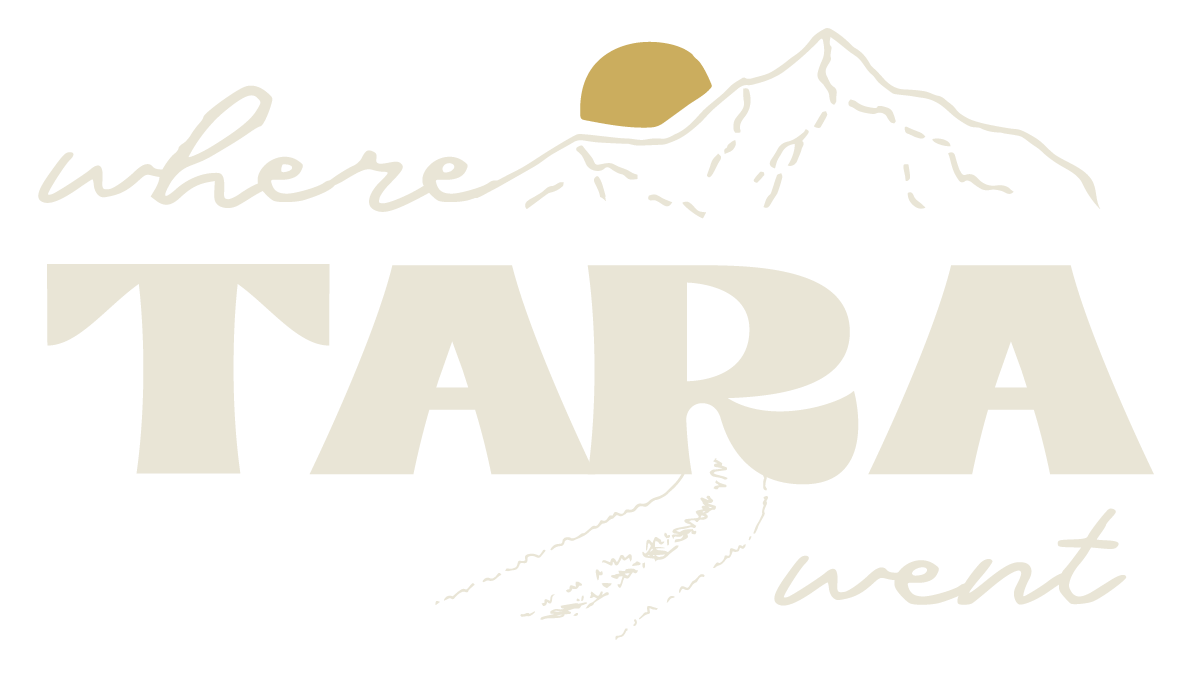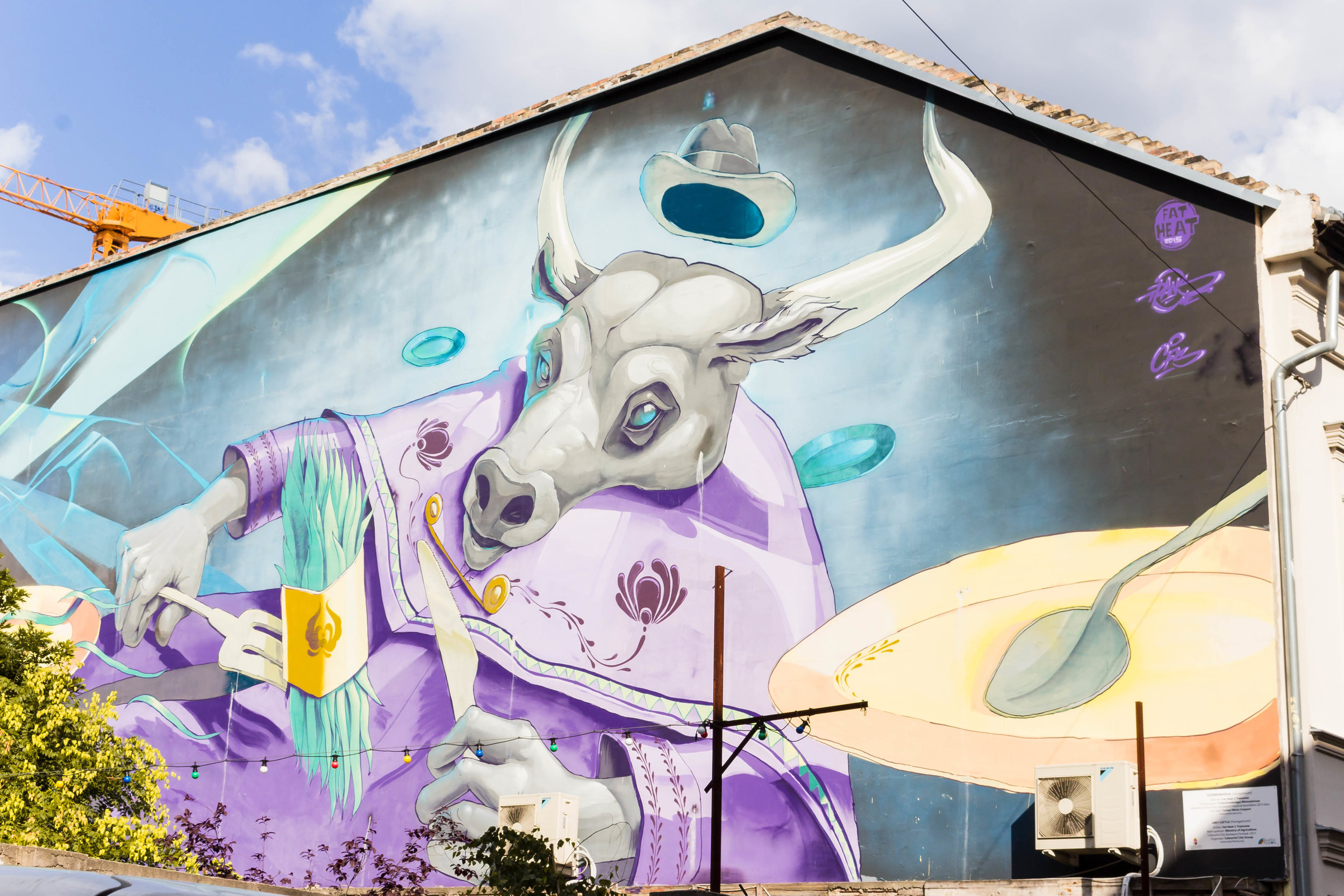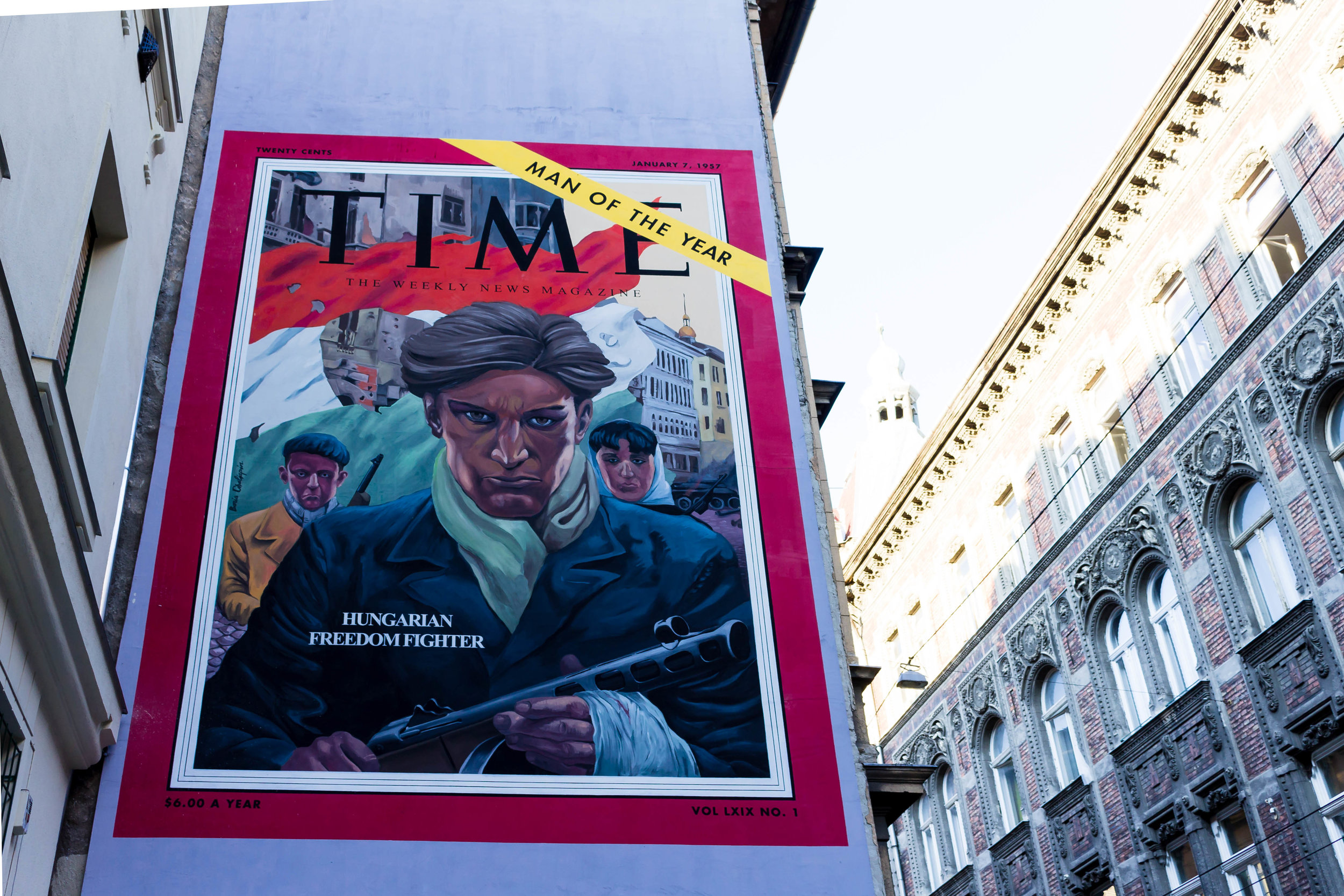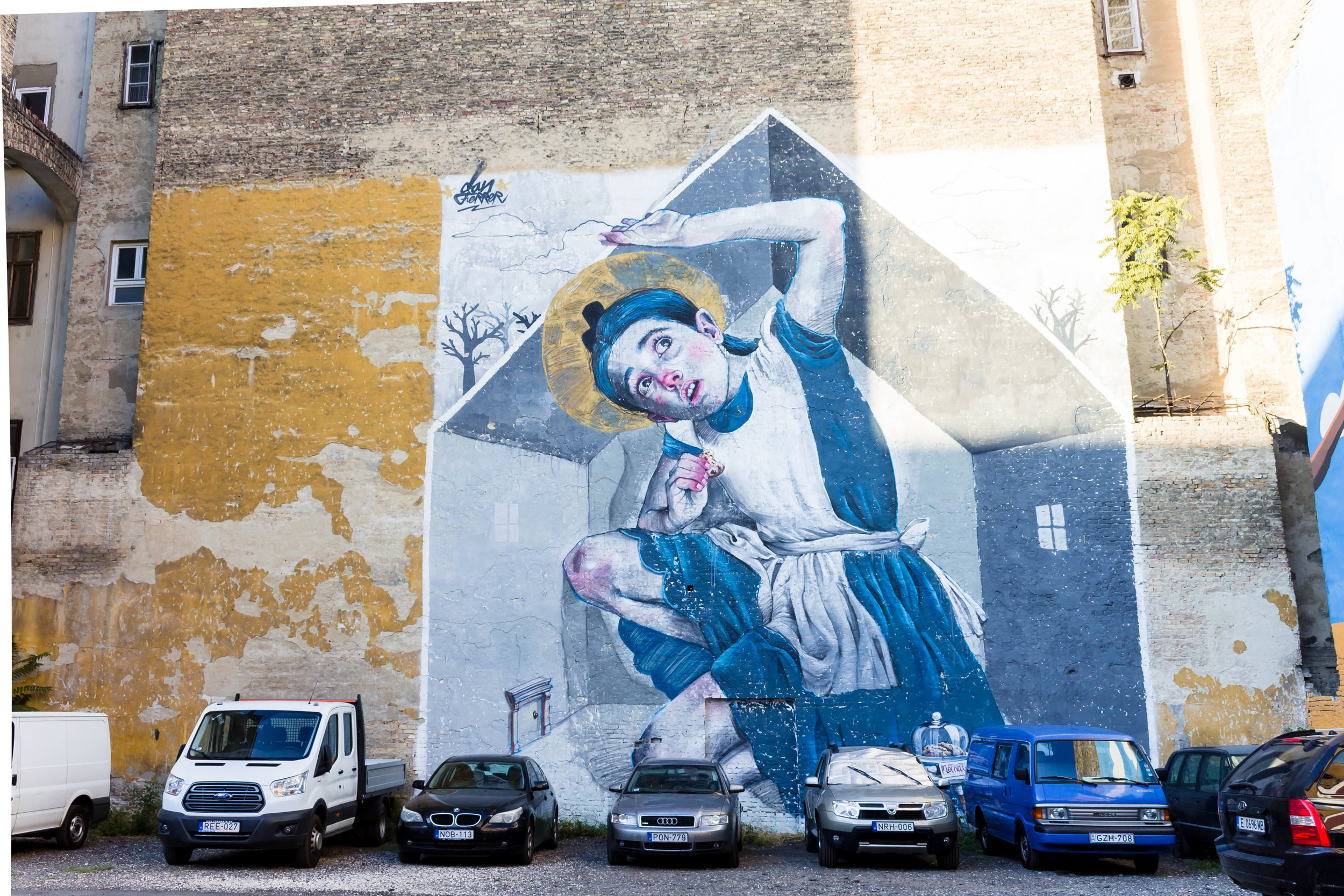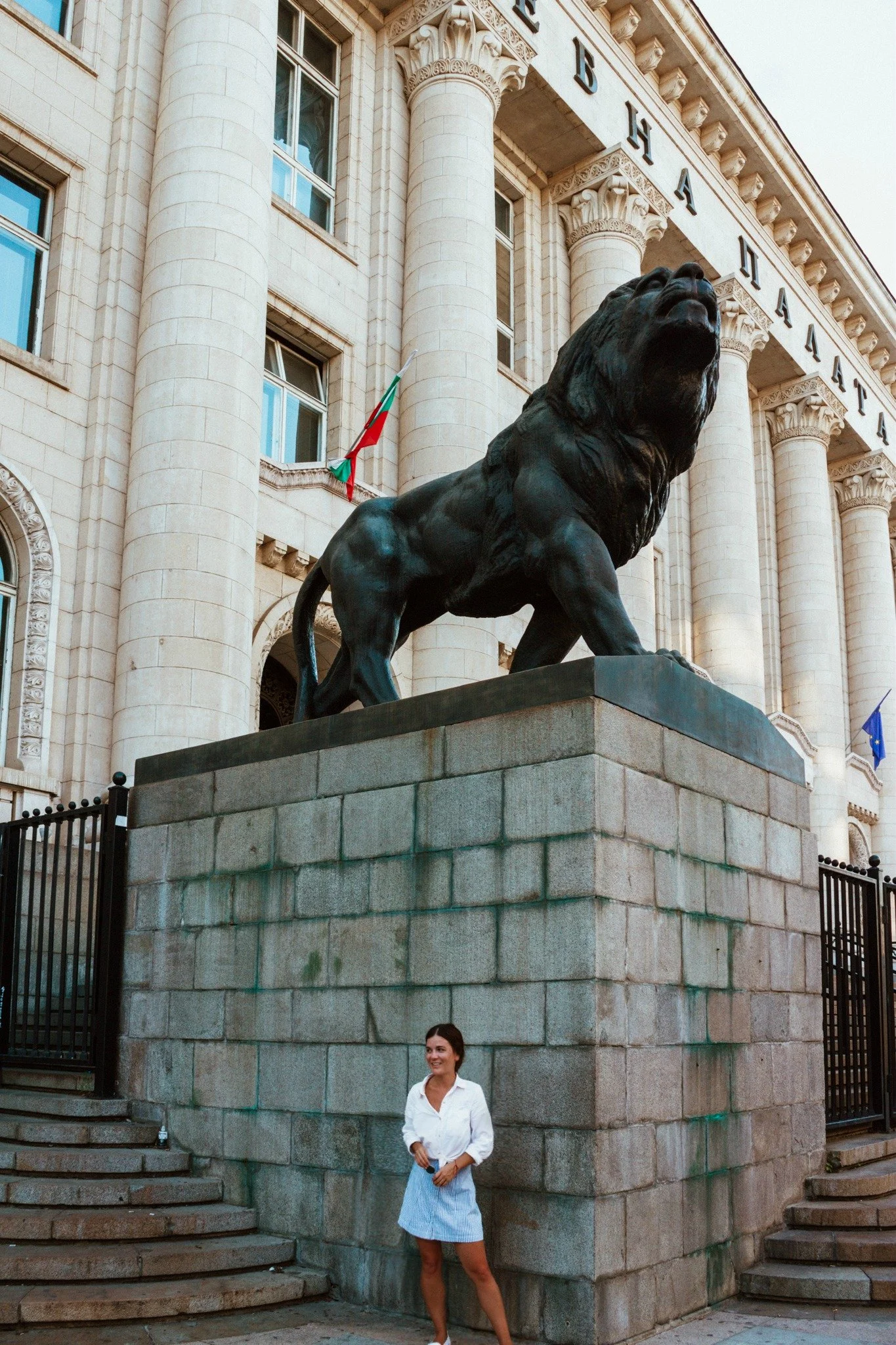where to find the best street art + ruin pubs in Budapest
Budapest is a European capital city that actually lives up to the hype that surrounds it. Cobblestone streets, beautiful bridges, and fantastic food— all waiting for you in the Hungarian capital. There is also a hip Jewish district you may not know about.
The Jewish quarter is the smallest district in Budapest, but it is also the most densely populated. Filled with historical remnants of the Jewish community that once thrived here, today there are three synagogues, heaps of murals, and delicious boutique-y eateries.
Luckily for me, I was invited by BudapestFlow to tour this part of the city and check out the art in the area. BudapestFlow is a website and tour company run by Attila, a local of Budapest who wants his city to be known for more than just bachelor parties and stag dos. Touring with Attila through the Jewish quarter revealed surprise after surprise and gave context to all the beautiful things I had been passing by without much thought. In this way, Attila has masterfully combined history, street art, and a facilitated conversation around gentrification.
read on for the best street art in budapest
a brief history of the jewish quarter ↴
The Jewish quarter was actually the ghetto set up by the Nazi regime in Budapest. Jews were forced to relocate here by the Hungarian government from November 1944-January 1945. It’s important to know that the Hungarian government welcomed the Nazi occupation. As a matter of fact, people welcomed the Axis armies with flowers and little to no resistance.
Today, the Jewish quarter, which is also known as the Jewish district, remains covered with historical remnants of the Jewish community that once prospered there. This cultural heritage is displayed most prominently by the Dohány Synagogue. It’s the largest synagogue in Europe and the second largest in the world. Stopping to visit Dohány means also getting to see the cemetery, the memorial garden, and a museum that features information about the Budapest Ghetto and Hungary’s Holocaust history.
The Jewish culture found in this part of town is not confined to the past. In the last seven years, the district has experienced a renaissance of sorts— a revival of Jewish culture, as well as boutique startups and trendy shops. Today, you can find heaps of Kosher restaurants {like Mazel Tov that serves up Israeli foods} and cafés that treat coffee brew like an art form. There are also a handful of Orthodox Jews that have moved back to the Jewish quarter and are helping to keep orthodox traditions alive and well.
what are ruin pubs? ↴
While ruin pubs are set in old buildings, the concept of ruin pubs has only come about in the last 15 years, skyrocketing into mainstream popularity in the last 10. The Jewish quarter’s decay during the Holocaust left the area stripped almost entirely of its identity. The buildings sat dilapidated and decaying. No businesses remained there and residents had long left that part of town.
In the 2000s, young people started looking for an alternative place to drink, away from the fancy bistros and restaurants in the city center. Three young men bought a group of these abandoned buildings and turned them into a complex of bars known as Szimpla Kert {yeah, the most famous ruin pub in the city}. At the time, the men had little to no money for decoration and flare. Instead, they furnished the bars with pieces they found by scavenging and asked local artists to help make the place more funky. In no time, the idea of a ruin pub caught on and they began springing up all over the Jewish quarter.
While Szimpla Ruin Pub is totally worth a visit, it’s far to say it’s become a tourist trap of sorts. On my BudapestFlow tour, we stopped in and explored the many rooms of the massive ruin bar. Attila pointed out how you could clearly hear mainly English being spoken and almost no Hungarian— meaning this is no longer the local haunt it used to be. I did enjoy Szimpla, don’t get me wrong! Every room of the massive ruin pub has something quirky to check out. My favourite room was the back part, called the Lab, as it was a bit quieter and we were all able to enjoy a brew while still being able to hear one another talk. It’s important to note though that Szimpla isn’t the only {or best} of its kind in Budapest.
where to find alternative ruin pubs ↴
After stopping by Szimpla twice {once with friends at night and once with Attila on the tour during the late afternoon}, I was really excited to visit other alternative ruin pubs, more off-the-beaten path. Here are two we visited that I highly recommend:
Anker’t Budapest: This beautiful, open-air ruin pub is ideal for golden hour or a warm summer night in Budapest and is almost entirely free of tourists {you’ll only here Hungarian being spoken here most nights}. It’s also LGBTQIA friendly!
Kőleves Kert: Think less typical ruin pub and more artsy beer garden illuminated by twinkly lights. Kőleves Kert has fish and chips, coffee, and an extensive list of beers {available in small and large sizes}. This was without a doubt my favourite ruin pub Attila took me to. I also went back here after my tour to meet up with my friend, Dan.
spectacular street art ↴
It’s impossible to ignore the street art that decorates so many of the crumbling building facades, especially if you’re looking up and around! Many of the pieces Attila showed me, however, were hidden-in-plain sight. Murals found above bookshops or on the sides of unassuming restaurants and businesses. We walked around the Jewish district taking in all the art and learning about what each piece represents or what story it tells. Understanding the meaning behind the art gave it context that made it feel even more important to preserve.
You should book in with BudapestFlow to get the full experience, but here is a little about some of my favourite pieces on the tour:
The current prime minister, Viktor Orban, has been called out by a satirical political party for being corrupt and greedy. He used tax money to build a railroad, the Vàl Valley Railway, from his hometown to another small town. Both towns are in rural Hungary with exceedingly small populations and no need for the railway. The funding requested was €2 million, based on the estimation of 2,500 passengers a day, despite the population of both towns being just over 1,000 people. At one point, there was a 55-day streak where the railroad didn’t see a single passenger. The above mural, of him sitting on top of Thomas the Tank Engine, is a political message conveyed through art.
The above picture is of a piece done by the Spanish artist Okudart nods to the district’s history. The man’s face in the center of the mural belongs to Ángel Sanz Briz, often referred to as the “Spanish Schindler.” Briz was a Spanish diplomat credited with saving over 5,000 Hungarian Jews by forging thousands of illegal passports so that they could leave the country. The conical images are like many of Okudart’s paintings seen around the world, as are the women and birds.
The Rubik’s cube was invented in Budapest by the Hungarian sculptor and professor of architecture Ernő Rubik back in 1974. The mural depicted above was painted in honor of the popular toy’s 40th anniversary. The numbers on the bottom left side of the mural are the number of possible combinations that exist for solving the 3-D puzzle. While it may look pixelated to your eyes, if you look at the mural through a screen, like your phone or even your camera lens, the cube becomes a full three-dimensional work of art!
gentrification of the area ↴
The double-edged sword of the revitalization of the Jewish district is gentrification, that is the process of renovating an area so that it meets the standards and tastes of the middle-upper-class. While these renovations have helped launch the economy of the area, this boost has come with party culture and heavy tourism. Attila explained how home no longer feels like home to many people who once lived in this neighbourhood. Ruin pub popularity has, unfortunately, brought about frequent {mainly British} bachelor parties that have significantly impacted local culture. Residents no longer want to live in the area with all the noise, so they are renting out their properties on sites like AirBnB. Where there were once small, hole-in-the-wall joints, there are now escape rooms and themed international bars.
Art is another casualty of the tourist boom in this area. An influx of tourists means there needs to be more accommodation options. Especially since not all travelers use AirBnB. This means building. Many of the murals throughout the Jewish district will be gone in the next few years, lying covered by the walls of fancy hotels, boutique hostels, and even swanky condominiums.
Tourism means more money and more jobs, but it seems the cost is art and heritage. And how authentic is a neighbourhood once all the locals have left?
other tours by budapestflow ↴
Spending your money on a tour with BudapestFlow is a great way to inject your money directly back into the local economy at the grassroots level. It also helps to preserve local artists’ work, since booking these tours shows the government that people want the art to remain preserved. If Attila’s Street Art Tour sounds like something you’d be into, consider booking his street art tour or one of the other tours offered by BudapestFlow, as listed below:
map ↴
Find the best ruin pubs in Budapest, Hungary on the map below.
BudapestFlow has a fantastic and comprehensive map of street art here.
Disclaimer: I was a guest of BudapestFlow, but all my opinions are my own and my experience is expressed authentically. This post contains affiliate links. When you make a purchase using an affiliate link, I may receive a small commission at no additional cost to you. Thank you for supporting Silly Little Kiwi.
